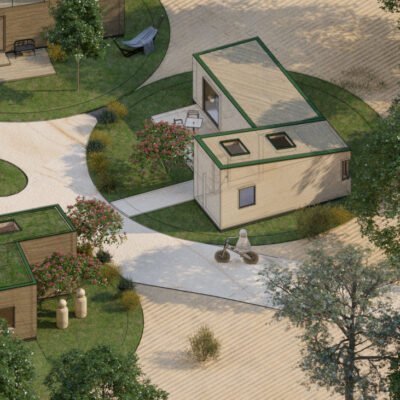TINY VILLAGE KOEDIJK
Large
enable sound
Nestled within the serene Geestmerambacht nature reserve, approximately 50 kilometers north of Amsterdam, LOOF has designed a residential community committed to sustainable living. This vibrant community is a testament to our commitment to preserving the environment.

Within the community, you'll find a harmonious blend of 10 unique tiny houses alongside a knowledge center. The plan includes ten modular, movable homes ranging from 26 m² to 62 m², accommodating a diverse group of residents from young professionals to families and retirees. Tiny Village Koedijk is a Liberterra community, designed in alignment with its Sustainable Development Goals.
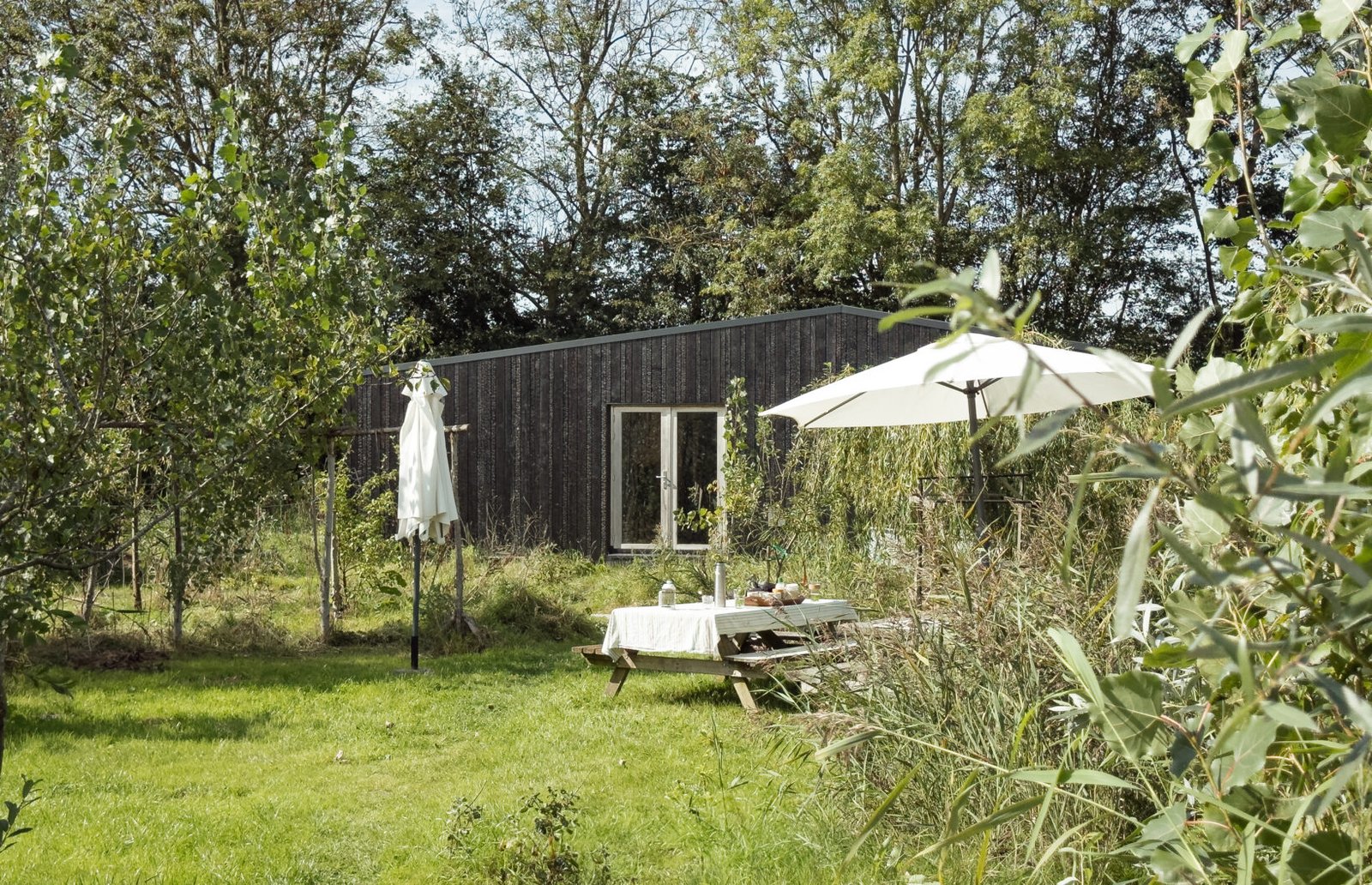
LOOF proposed a plan featuring circular plots with fixed distances, ensuring privacy and adherence to building codes, such as fire resistance. The circular plots offer residents the freedom to orient their homes in any direction they prefer. Whether you are a morning or evening person, you can position your home to capture the sunlight at your ideal time of day. Collectively, these plots create a central area that serves as a focal point for social interaction, providing a space for neighbors to gather, mingle, and connect.
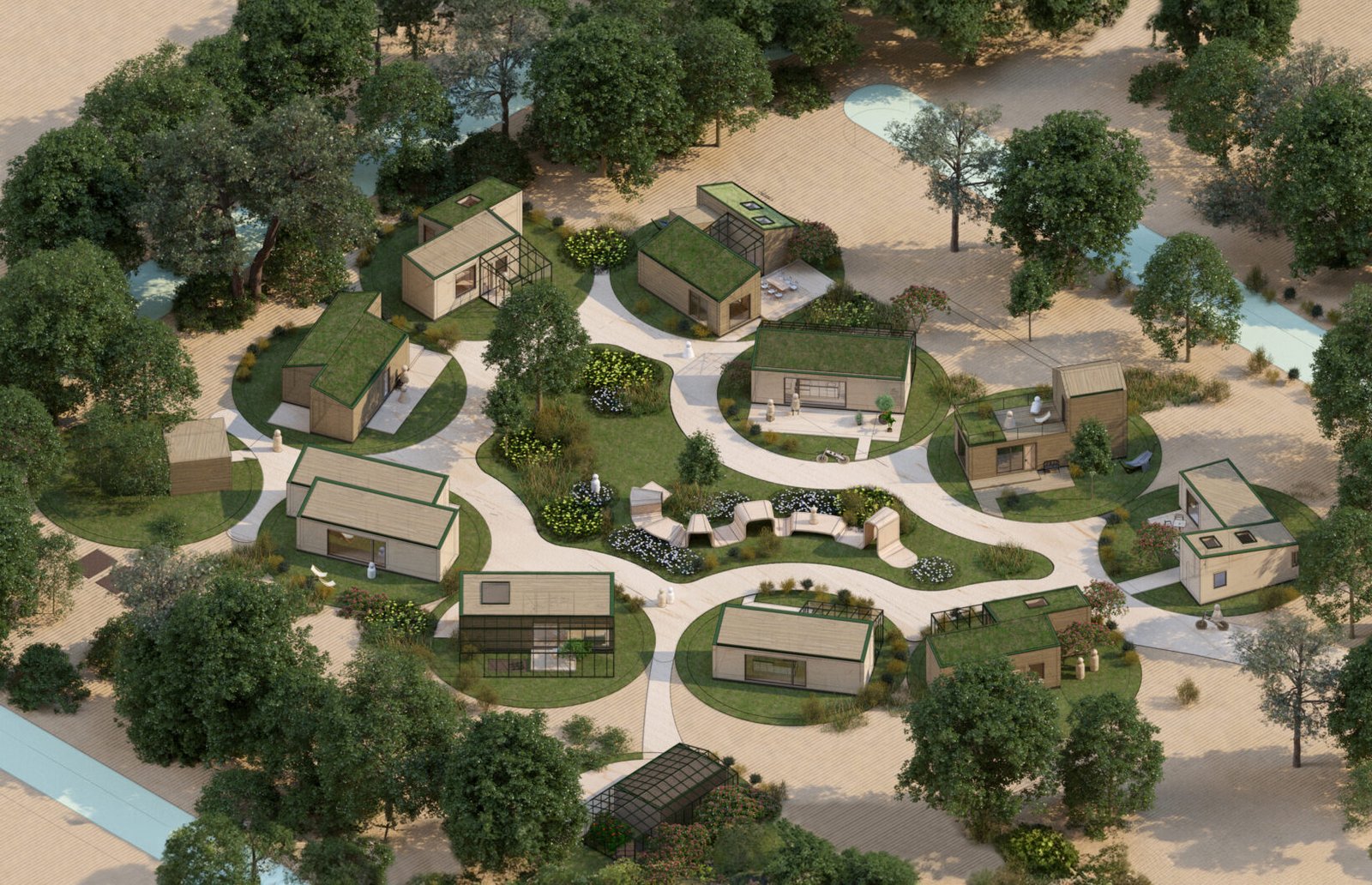
An integral part of the urban plan is food production. The edible garden and vegetable garden supply food for the entire community and support local wildlife during part of the year. The community partners with local organizations, such as the food forest De Groene Oase, to exchange knowledge and foster a healthy, biodiverse environment that benefits both people and nature.
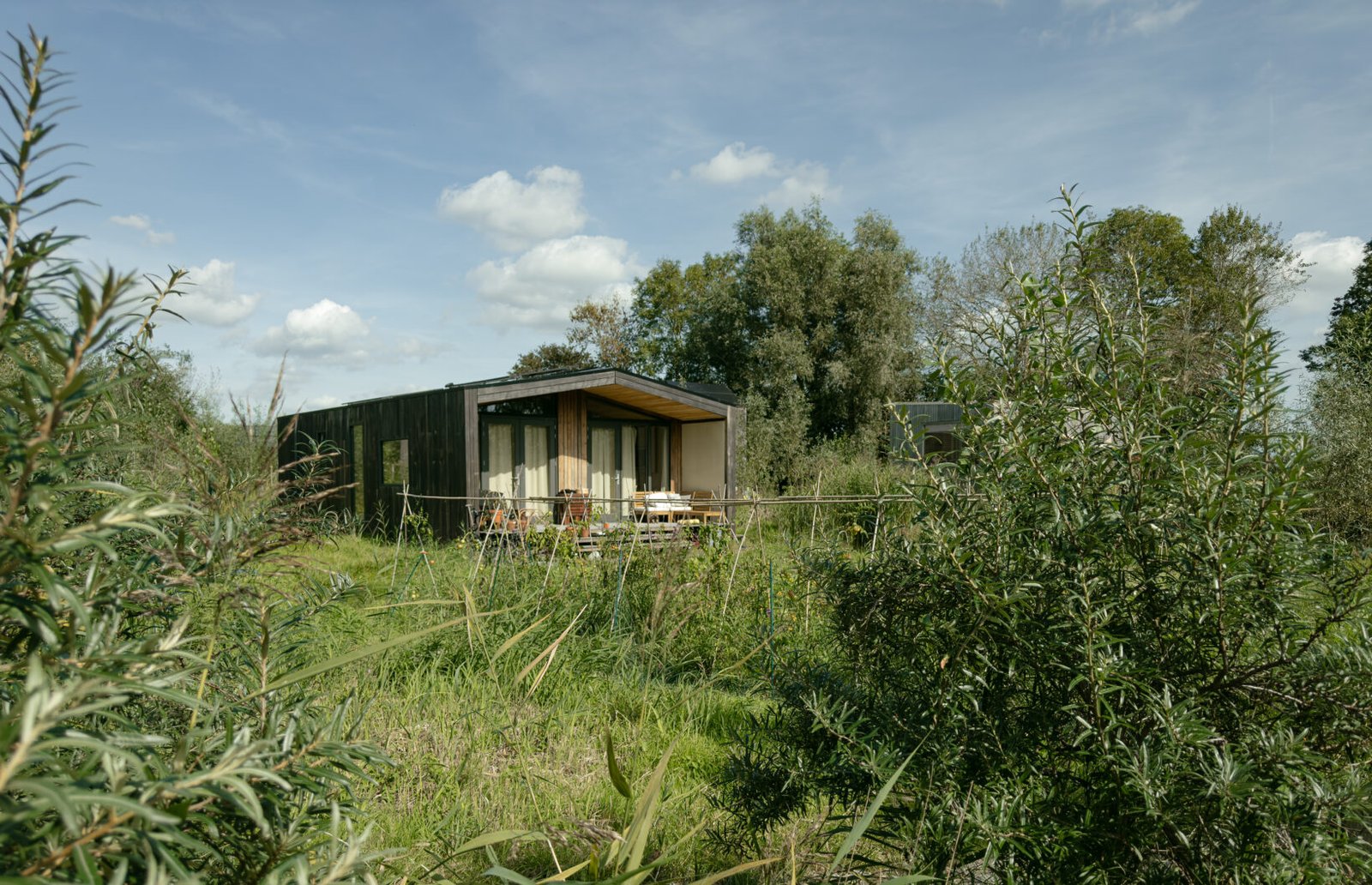
What sets these homes apart is their construction. Each house is constructed on screw piles, allowing for easy relocation if needed. The houses feature a frame of laminated wooden beams and columns, with notches throughout the structure enabling residents to build their own walls and roofs using standard-size wooden beams and wood fiber insulation. This approach to engineering empowers residents to construct their entire home themselves, fostering a true sense of ownership and accomplishment.
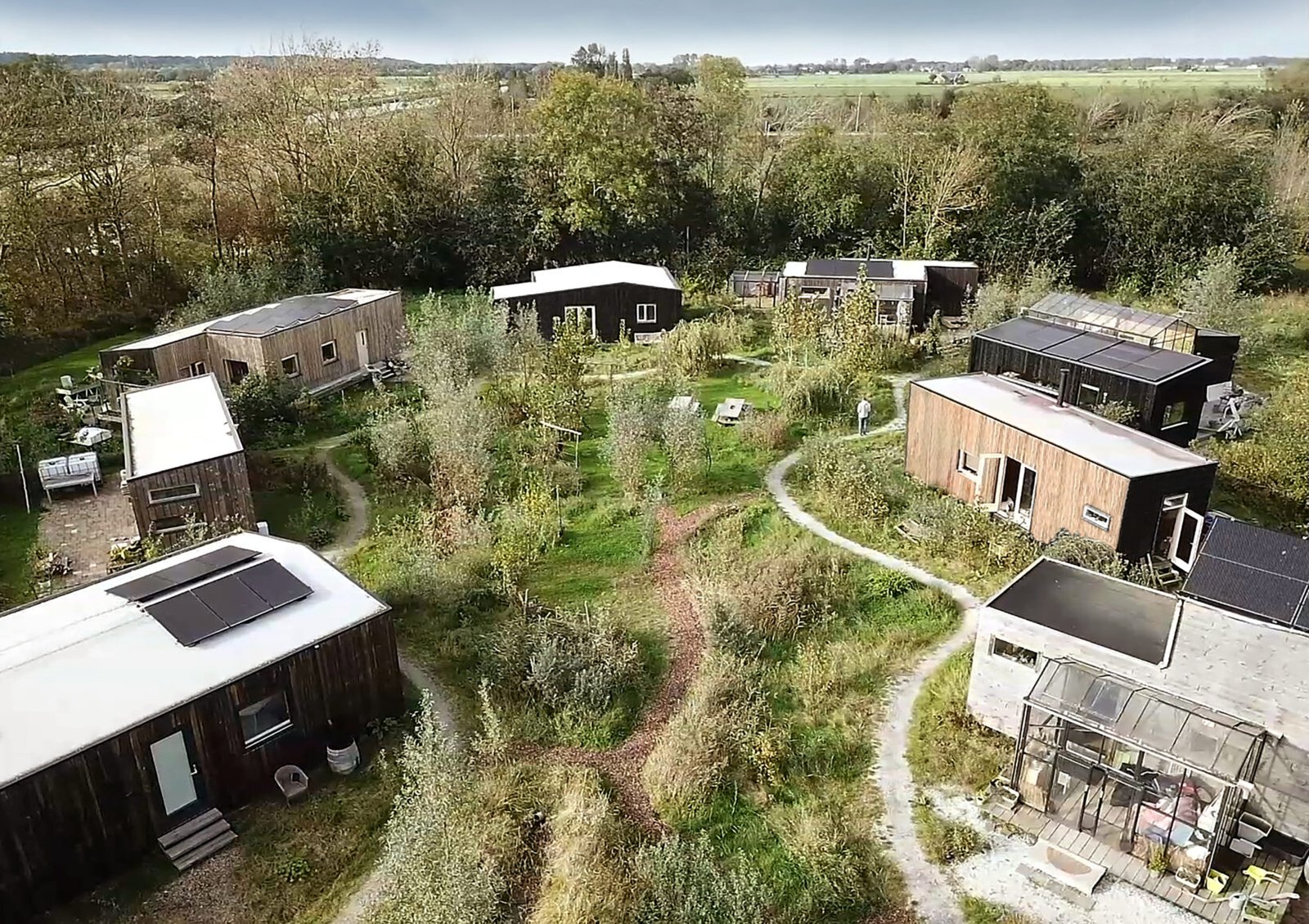
The homes are designed to be partially or entirely off-grid, ensuring a minimal ecological footprint. A battery repurposed from second-hand electric car batteries is used to store excess electrical energy for the entire community. Among them, one exceptional house was recognized as the ‘most sustainable home in the Netherlands.’ Despite its compact 56m² size, it comfortably accommodates a family of four. The interior of the house was designed by resident Iris van Asselt, a sustainable interior designer and founder of Studio Duurzaam Wonen. She furnished the space with a focus on sustainability and circularity, blending second-hand treasures, authentic materials, and newly sourced, eco-friendly elements.

The house is designed around a batch of second-hand frames with triple glazing. The bedrooms are strategically placed on the cooler north side, while the living room and kitchen benefit from the warmth and natural light of the south-facing orientation. Between the two living units, a hallway connects a bathroom and a spacious closet. The design is future-proof, as the bedroom area can be detached from the rest of the house. This allows one of the children to take that unit with them when they move out.

The kitchen’s base is a 30-year-old, high-quality unit salvaged from waste. Its cabinet fronts were replaced with ecological chipboard, finished with decorative panels made from seaweed. The countertop, resembling natural stone, is a bio-based material composed of 70% agricultural waste, installed with minimal leftover material. The backsplash is crafted from clay panels embedded with mussel shells. This kitchen also serves as a pilot project, testing the durability of both the seaweed panels and the clay-and-mussel-shell backsplash under daily use. The sitting area features a coffee table and armchair salvaged from the streets of Amsterdam, paired with a custom-made sofa. The sofa's cushions are upholstered in Dutch-produced linen and filled with wool from local sheep—a material often undervalued and typically discarded or incinerated.Iris documented their journey in her book, *Puur natuurlijk wonen* (written in Dutch), which details the process of building the house, their path to sustainable living, and offers practical tips for creating an eco-friendly interior.


